-
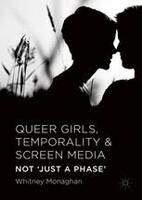
This book takes up the queer girl as a represented and rhetorical figure within film, television and video. In 1987, Canada’s Degrassi Junior High featured one of TV’s first queer teen storylines. Contained to a single episode, it was promptly forgotten within both the series and popular culture more generally. Cut to 2016 – queer girls are now major characters in films and television series around the globe. No longer represented as subsidiary characters within forgettable storylines, queer girls are a regular feature of contemporary screen media. Analysing the terms of this newfound visibility, Whitney Monaghan provides a critical perspective on this, arguing that a temporal logic underpins many representations of queer girlhood. Examining an archive of screen texts that includes teen television series and teenpics, art-house, queer and independent cinemas as well as new forms of digital video, she expands current discourse on both queer representation and girls’ studies by looking at sexuality through themes of temporality. This book, the first full-length study of its kind, draws on concepts of boredom, nostalgia and transience to offer a new perspective on queer representation in contemporary screen media.
-

The Reification of Desire takes two critical perspectives rarely analyzed together-formative arguments for Marxism and those that have been the basis for queer theory-and productively scrutinizes these ideas both with and against each other to put forth a new theoretical connection between Marxism and queer studies. Kevin Floyd brings queer critique to bear on the Marxian categories of reification and totality and considers the dialectic that frames the work of Georg Lukács, Herbert Marcuse, and Fredric Jameson. Reading the work of these theorists together with influential queer work by such figures as Michel Foucault and Judith Butler, and alongside reconsiderations of such texts as The Sun Also Rises and Midnight Cowboy, Floyd reformulates these two central categories that have been inseparable from a key strand of Marxist thought and have marked both its explanatory power and its limitations. Floyd theorizes a dissociation of sexuality from gender at the beginning of the twentieth century in terms of reification to claim that this dissociation is one aspect of a larger dynamic of social reification enforced by capitalism. Developing a queer examination of reification and totality, Kevin Floyd ultimately argues that the insights of queer theory require a fundamental rethinking of both.
-

The media strongly influences our everyday notions of gender roles and our concepts of gender identity. The Encyclopedia of Gender in Media critically examines the role of the media in enabling, facilitating, or challenging the social construction of gender in our society. The work addresses a variety of entertainment and news content in print and electronic media and explores the social construction of masculinity as well as femininity. In addition to representations of gender within the media, we also analyze gender issues related to media ownership and the media workforce. Despite an abundance of textbooks, anthologies, and university press monographs on the topic of gender in media, until now no comprehensive reference work has tackled this topic of perennial interest in student research and papers.Features and benefits: 150 signed entries (each with Cross References and Further Readings) are organized in A-to-Z fashion to give students easy access to the full range of topics within gender in media. A thematic Reader's Guide in the front matter groups related entries by broad topical or thematic areas to make it easy for users to find related entries at a glance, with themes including "Discrimination & Media Effects," "Media Modes," "New Media," "Media Portrayals & Representations," "Biographies," and more. In the electronic version, the Reader's Guide combines with a detailed Index and the Cross References to provide users with robust search-and browse capacities. A Chronology in the back matter helps students put individual events into broader historical context. A Glossary provides students with concise definitions to key terms in the field. A Resource Guide to classic books, journals, and web sites (along with the Further Readings accompanying each entry) helps guide students to further resources for their research journeys. An Appendix provides users with a number of reports related to gender in media.
-
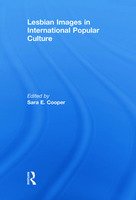
Lesbian images are everywhere these days–cable television, film, popular magazines, advertising, Internet and the news–creating desire in men and women alike, selling commercial products and services, and stirring up controversy on many levels. But do these images truly represent the diverse identities of women-centered women worldwide? This book addresses the limited access to images of diverse and international lesbian identities and experiences, in order to provide the reader with a more complete understanding of what it means to be lesbian in a global context. It investigates how lesbians portray themselves as well as how they are portrayed by others in several areas of popular culture, including television, film, the arts, Internet, advertising and the news. It features articles on U.S. lesbian cartoonists, Canadian viewer perceptions of lesbians on the cable show Queer as Folk, panoramic looks at lesbians' representation in Australian and Spanish television programming, and in-depth explorations of films by Spanish director Pedro Almodóvar, leading Indian film producers, and independent Chinese-American filmmakers.This book was published as a special issue of the Journal of Lesbian Studies.
-

The purpose of this paper is to present a case study of a specialty collection implementation: lesbian fiction, in the Barnard College Library. Design/methodology/approach – The study employs a multistep approach to implement the development of a lesbian fiction collection. First, a collection profile was created to assess the current state of collection, and then a checklist was developed to serve as a collection development tool. Findings – The collection profile provides important information for the collection development process. Consistent subject heading access control is essential for collection assessment and maintenance. Practical implications – The collection proposal and the suggestions drawn by the study were adopted by Barnard Library for collection development and maintenance. The methodology applied and the resources consulted in the study can serve as references for academic librarians with similar collection development goals. Originality/value – Very few studies have been done to discuss issues related to the collection development of GLBT themed fiction, particularly lesbian fiction in an academic library. This paper provides a concrete example of how Barnard Library carried out the selection of lesbian novels.
-
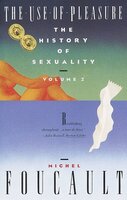
In this sequel to The History of Sexuality, Volume I: An Introduction, the brilliantly original French thinker who died in 1984 gives an analysis of how the ancient Greeks perceived sexuality.Throughout The Uses of Pleasure Foucault analyzes an irresistible array of ancient Greek texts on eroticism as he tries to answer basic questions: How in the West did sexual experience become a moral issue? And why were other appetites of the body, such as hunger, and collective concerns, such as civic duty, not subjected to the numberless rules and regulations and judgments that have defined, if not confined, sexual behavior?
-

In Thiefing Sugar, Omise’eke Natasha Tinsley explores the poetry and prose of Caribbean women writers, revealing in their imagery a rich tradition of erotic relations between women. She takes the book’s title from Dionne Brand’s novel In Another Place, Not Here, where eroticism between women is likened to the sweet and subversive act of cane cutters stealing sugar. The natural world is repeatedly reclaimed and reinterpreted to express love between women in the poetry and prose that Tinsley analyzes. She not only recuperates stories of Caribbean women loving women, stories that have been ignored or passed over by postcolonial and queer scholarship until now, she also shows how those erotic relations and their literary evocations form a poetics and politics of decolonization. Tinsley’s interpretations of twentieth-century literature by Dutch-, English-, and French-speaking women from the Caribbean take into account colonialism, migration, labor history, violence, and revolutionary politics. Throughout Thiefing Sugar, Tinsley connects her readings to contemporary matters such as neoimperialism and international LGBT and human-rights discourses. She explains too how the texts that she examines intervene in black feminist, queer, and postcolonial studies, particularly when she highlights the cultural limitations of the metaphors that dominate queer theory in North America and Europe, including those of the closet and “coming out.”
-
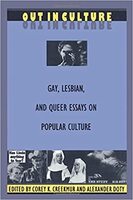
Out in Culture charts some of the ways in which lesbians, gays, and queers have understood and negotiated the pleasures and affirmations, as well as the disappointments, of mass culture. The essays collected here, combining critical and theoretical works from a cross-section of academics, journalists, and artists, demonstrate a rich variety of gay and lesbian approaches to film, television, popular music, and fashion. This wide-ranging anthology is the first to juxtapose pioneering work in gay and lesbian media criticism with recent essays in contemporary queer cultural studies.Uniquely accessible, Out in Culture presents such popular writers as B. Ruby Rich, Essex Hemphill, and Michael Musto as well as influential critics such as Richard Dyer, Chris Straayer, and Julia Lesage, on topics ranging from the queer careers of Agnes Moorehead and Pee Wee Herman to the cultural politics of gay drag, lesbian style, the visualization of AIDS, and the black snap! queen experience. Of particular interest are two "dossiers," the first linking essays on the queer content of Alfred Hitchcock’s films, and the second on the production and reception of popular music within gay and lesbian communities. The volume concludes with an extensive bibliography—the most comprehensive currently available—of sources in gay, lesbian, and queer media criticism.Out in Culture explores the distinctive and original ways in which gays, lesbians, and queers have experienced, appropriated, and resisted the images and artifacts of popular culture. This eclectic anthology will be of interest to a broad audience of general readers and scholars interested in gay and lesbian issues; students of film, media, gender, and cultural studies; and those interested in the emerging field of queer theory. Contributors: Sabrina Barton, Edith Becker, Rhona J. Berenstein, Nayland Blake, Michelle Citron, Danae Clark, Corey K. Creekmur, Alexander Doty, Richard Dyer, Heather Findlay, Jan Zita Grover, Essex Hemphill, John Hepworth, Jeffrey Hilbert, Lucretia Knapp, Bruce La Bruce, Al LaValley, Julia Lesage, Michael Moon, Michael Musto, B. Ruby Rich, Marlon Riggs, Arlene Stein, Chris Straayer, Anthony Thomas, Mark Thompson, Valerie Traub, Thomas Waugh, Patricia White, Robin Wood
-
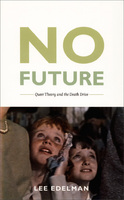
In this searing polemic, Lee Edelman outlines a radically uncompromising new ethics of queer theory. His main target is the all-pervasive figure of the child, which he reads as the linchpin of our universal politics of “reproductive futurism.” Edelman argues that the child, understood as innocence in need of protection, represents the possibility of the future against which the queer is positioned as the embodiment of a relentlessly narcissistic, antisocial, and future-negating drive. He boldly insists that the efficacy of queerness lies in its very willingness to embrace this refusal of the social and political order. In No Future, Edelman urges queers to abandon the stance of accommodation and accede to their status as figures for the force of a negativity that he links with irony, jouissance, and, ultimately, the death drive itself.Closely engaging with literary texts, Edelman makes a compelling case for imagining Scrooge without Tiny Tim and Silas Marner without little Eppie. Looking to Alfred Hitchcock’s films, he embraces two of the director’s most notorious creations: the sadistic Leonard of North by Northwest, who steps on the hand that holds the couple precariously above the abyss, and the terrifying title figures of The Birds, with their predilection for children. Edelman enlarges the reach of contemporary psychoanalytic theory as he brings it to bear not only on works of literature and film but also on such current political flashpoints as gay marriage and gay parenting. Throwing down the theoretical gauntlet, No Future reimagines queerness with a passion certain to spark an equally impassioned debate among its readers.
-

Michael Rosenfeld offers a new theory of family dynamics to account for the interesting and startling changes in marriage and family composition in the United States in recent years. His argument revolves around the independent life stage that emerged around 1960. This stage is experienced by young adults after they leave their parents' homes but before they settle down to start their own families. During this time, young men and women go away to college, travel abroad, begin careers, and enjoy social independence. This independent life stage has reduced parental control over the dating practices and mate selection of their children and has resulted in a sharp rise in interracial and same-sex unions--unions that were more easily averted by previous generations of parents. Complementing analysis of newly available census data from the entire twentieth century with in-depth interviews that explore the histories of families and couples, Rosenfeld proposes a conceptual model to explain many social changes that may seem unrelated but that flow from the same underlying logic. He shows, for example, that the more a relationship is transgressive of conventional morality, the more likely it is for the individuals to live away from their family and area of origin.
-

Gender: Psychological Perspectives synthesizes the latest research on gender to help students think critically about the differences between research findings and stereotypes, provoking them to examine and revise their own preconceptions. The text examines the behavioral, biological, and social context in which women and men express gendered behaviors. The text's unique pedagogical program helps students understand the portrayal of gender in the media and the application of gender research in the real world. Headlines from the news open each chapter to engage the reader. Gendered Voices present true personal accounts of people's lives. According to the Media boxes highlight gender-related coverage in newspapers, magazines, books, TV, and movies, while According to the Research boxes offer the latest scientifically based research to help students analyze the accuracy and fairness of gender images presented in the media. Additionally, Considering Diversity sections emphasize the cross-cultural perspective of gender. This text is intended for undergraduate or graduate courses on the psychology of gender, psychology of sex, psychology of women or men, gender issues, sex roles, women in society, and women's or men's studies. It is also applicable to sociology and anthropology courses on diversity. Seventh Edition Highlights: 12 new headlines on topics ranging from gender and the Flynn effect to gender stereotyping that affects men Coverage of gender issues in aging adults and transgendered individuals Expanded coverage of diversity issues in the US and around the globe, including the latest research from China, Japan, and Europe More tables, figures, and photos to provide summaries of text in an easy-to-absorb format End-of-chapter summaries and glossary Suggested readings for further exploration of chapter topics Companion website at www.routledge.com/cw/Brannon containing both instructor and student resources
-

In the first comprehensive history of American manhood, E. Anthony Rotundo sweeps away the groundless assumptions and myths that inform the current fascination with men's lives. Opposing the views of men's movement leaders and best-selling authors who maintain that manliness is eternal and unchanging, Rotundo stresses that our concept of manhood is man-made and that, like any human invention, it has a history. American Manhood is a fascinating account of how our understanding of what it means to be a man has changed over time.
-

In this bold new work of cultural criticism, Ann Cvetkovich develops a queer approach to trauma. She argues for the importance of recognizing—and archiving—accounts of trauma that belong as much to the ordinary and everyday as to the domain of catastrophe. An Archive of Feelings contends that the field of trauma studies, limited by too strict a division between the public and the private, has overlooked the experiences of women and queers. Rejecting the pathologizing understandings of trauma that permeate medical and clinical discourses on the subject, Cvetkovich develops instead a sex-positive approach missing even from most feminist work on trauma. She challenges the field to engage more fully with sexual trauma and the wide range of feelings in its vicinity, including those associated with butch-femme sex and aids activism and caretaking. An Archive of Feelings brings together oral histories from lesbian activists involved in act up/New York; readings of literature by Dorothy Allison, Leslie Feinberg, Cherríe Moraga, and Shani Mootoo; videos by Jean Carlomusto and Pratibha Parmar; and performances by Lisa Kron, Carmelita Tropicana, and the bands Le Tigre and Tribe 8. Cvetkovich reveals how activism, performance, and literature give rise to public cultures that work through trauma and transform the conditions producing it. By looking closely at connections between sexuality, trauma, and the creation of lesbian public cultures, Cvetkovich makes those experiences that have been pushed to the peripheries of trauma culture the defining principles of a new construction of sexual trauma—one in which trauma catalyzes the creation of cultural archives and political communities.
-

In Depression: A Public Feeling, Ann Cvetkovich combines memoir and critical essay in search of ways of writing about depression as a cultural and political phenomenon that offer alternatives to medical models. She describes her own experience of the professional pressures, creative anxiety, and political hopelessness that led to intellectual blockage while she was finishing her dissertation and writing her first book. Building on the insights of the memoir, in the critical essay she considers the idea that feeling bad constitutes the lived experience of neoliberal capitalism.Cvetkovich draws on an unusual archive, including accounts of early Christian acedia and spiritual despair, texts connecting the histories of slavery and colonialism with their violent present-day legacies, and utopian spaces created from lesbian feminist practices of crafting. She herself seeks to craft a queer cultural analysis that accounts for depression as a historical category, a felt experience, and a point of entry into discussions about theory, contemporary culture, and everyday life. Depression: A Public Feeling suggests that utopian visions can reside in daily habits and practices, such as writing and yoga, and it highlights the centrality of somatic and felt experience to political activism and social transformation.
-

Women's and men's worlds were largely separate in ancient Mediterranean societies, and, in consequence, many women's deepest personal relationships were with other women. Yet relatively little scholarly or popular attention has focused on women's relationships in antiquity, in contrast to recent interest in the relationships between men in ancient Greece and Rome. The essays in this book seek to close this gap by exploring a wide variety of textual and archaeological evidence for women's homosocial and homoerotic relationships from prehistoric Greece to fifth-century CE Egypt.Drawing on developments in feminist theory, gay and lesbian studies, and queer theory, as well as traditional textual and art historical methods, the contributors to this volume examine representations of women's lives with other women, their friendships, and sexual subjectivity. They present new interpretations of the evidence offered by the literary works of Sappho, Ovid, and Lucian; Bronze Age frescoes and Greek vase painting, funerary reliefs, and other artistic representations; and Egyptian legal documents.
-

The last five years have witnessed the birth of a vibrant new group of young scholars who are writing about queer law, politics, and policy--topics which are no longer treated as of interest only to lesbians and gay men, but which now garner the attention of political theorists of all stripes. Playing With Fire--the first scholarly collection on queer politics by US political theorists--opens the intersection of lesbian and gay studies and political theory to a wide audience. It covers a wide range of issues, including: the theory of queer identities; the contrasts among ethnic, racial, and sexual identities; the debate between liberals and communitarians; the right to privacy; and the meaning of equal citizenship.
-
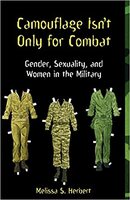
Reveals the different ways women navigate the traditionally masculine environment of the militaryDrawing on surveys and interviews with almost 300 female military personnel, Melissa Herbert explores how women's everyday actions, such as choice of uniform, hobby, or social activity, involve the creation and re-creation of what it means to be a woman, and particularly a woman soldier. Do women feel pressured to be "more masculine," to convey that they are not a threat to men's jobs or status and to avoid being perceived as lesbians? She also examines the role of gender and sexuality in the maintenance of the male-defined military institution, proposing that, more than sexual harassment or individual discrimination, it is the military's masculine ideology--which views military service as the domain of men and as a mechanism for the achievement of manhood--which serves to limit women's participation in the military has increased dramatically. In the wake of armed conflict involving female military personnel and several sexual misconduct scandals, much attention has focused on what life is like for women in the armed services. Few, however, have examined how these women negotiate an environment that has been structured and defined as masculine.
-

With this benchmark work, lesbian and gay studies comes of age. Drawing from a rich team of global contributors and carefully structured to elucidate the core issues in the field, it constitutes an unparalleled resource for teaching, research and debate. The Handbook of Lesbian and Gay Studies is organized into 4 sections: History & Theory: This covers the roots of lesbian and gay studies, the institutionalization of the subject in the Academy, the 'naturalness' of heterosexuality, science and sexuality, the comparative sociology of homosexualities and the heterosexual//homosexual division. Identity & Community: This examines the formation of gay and lesbian identities communities and movements, 'cyber-queer' research, sexuality and space, generational issues in lesbian and gay lifecycles and the subject of bisexuality Institutions: This investigates questions of the governance of sexualities, lesbian and gay health, sexualities and education, religion and homosexuality, homosexuality and the law, gay and lesbian workers, homosexuality and the family, and lesbian, gay and queer encounters with the media and popular culture Politics: This explores the formation of the gay and lesbian movements, impact of globalization, antigay and lesbian violence, nationalism and transnationalism in lesbian and gay studies and sexual citizenship. The result is an authoritative book that demarcates the field, stimulates critical discussion and provides lesbian and gay studies with an enriching focal reference point. It is, quite simply, a breakthrough work that will galvanize discussion and research for years to come.
-

Images of the corseted, domestic, white middle-class female and the black woman as slave mammy or jezebel loom large in studies of nineteenth-century womanhood, despite recent critical work exploring alternatives to those images. In Out in Public, Alison Piepmeier focuses on women's bodies as a site for their public self-construction. Rather than relying on familiar binaries such as public/private and victim/agent, Piepmeier presents women's public embodiment as multiple, transitional, strategic, playful, and contested. Piepmeier looks closely at the lives and works of actress and playwright Anna Cora Mowatt (1819-1871), Christian Science founder Mary Baker Eddy (1821-1910), abolitionist and feminist orator Sojourner Truth (1797-1883), antilynching journalist Ida B. Wells (1862-1931), and Godey's Lady's Book editor Sarah Josepha Hale (1788-1879). Piepmeier's analysis of these women places their written documents in conjunction with salient cultural contexts, including freak shows, scientific writing, tall tales, and popular visual images of athletic women. By destabilizing and complicating traditional binary categories, Piepmeier makes culturally obscured or unreadable aspects of women's lives visible, offering a more complete understanding of nineteenth-century female corporeality.
-
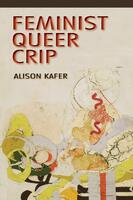
In Feminist, Queer, Crip Alison Kafer imagines a different future for disability and disabled bodies. Challenging the ways in which ideas about the future and time have been deployed in the service of compulsory able-bodiedness and able-mindedness, Kafer rejects the idea of disability as a pre-determined limit. She juxtaposes theories, movements, and identities such as environmental justice, reproductive justice, cyborg theory, transgender politics, and disability that are typically discussed in isolation and envisions new possibilities for crip futures and feminist/queer/crip alliances. This bold book goes against the grain of normalization and promotes a political framework for a more just world.
-

The Handbook of Gender, Sex and Media offers original insights into the complex set of relations which exist between gender, sex, sexualities and the media, and in doing so, showcases new research at the forefront of media and communication practice and theory. Brings together a collection of new, cutting-edge research exploring a number of different facets of the broad relationship between gender and media Moves beyond associating gender with man/woman and instead considers the relationship between the construction of gender norms, biological sex and the mediation of sex and sexuality Offers genuinely new insights into the complicated and complex set of relations which exist between gender, sex, sexualities and the media Essay topics range from the continuing sexism of TV advertising to ways in which the internet is facilitating the (re)invention of our sexual selves.
-

In Queer Theory: An Introduction, Annamarie Jagose provides a clear and concise explanation of queer theory, tracing it as part of an intriguing history of same-sex love over the last century, from mid-century homophile movements to gay liberation, the womens movement and lesbian feminism, to the re-appropriation of the term 'queer.' Carefully interrogating the arguments of supporters and opponents of queer theory, Jagose suggests that its strength lies in its questioning of the very idea of sexual identities. Blending insights from prominent queer theorists such as Judith Butler and David Halperin, Jagose argues that queer theory's challenge is to create new ways of thinking, not only about fixed sexual identities such as heterosexual and homosexual, but also about other supposedly essential notions such as 'sexuality' and 'gender' and even 'man' and 'woman.'
-
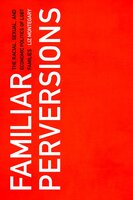
Over the past two decades, same-sex couples raising children have become more visible within US political and popular culture. Thanks to widely circulated images of well-mannered, well-dressed, and well-off two-parent families, a select number of LGBT-identified parents have gained recognition as model American citizens. In Familiar Perversions, Liz Montegary shows how this seemingly progressive view of same-sex parenting has taken shape during a period of growing racial inequality and economic insecurity in the United States. This book evaluates the recent successes of the “family equality” movement, while asking important questions about its relationship to neoliberalism, the policing of sexual cultures, and the broader context of social justice organizing at the turn of the twenty-first century. Montegary’s investigation of the politics of LGBT family life takes us on a journey that includes not only activist events and the courtrooms where landmark decisions about same-sex families were made, but also parenting workshops, cruise ships, and gay resort towns. Through its sustained historical analysis, Familiar Perversions lays critical groundwork for imagining a queer family movement that can support and strengthen the diverse networks of care, kinship, and intimacy on which our collective survival depends.
-

LGBT Identity and Online New Media examines constructions of LGBT identity within new media. The contributors consider the effects, issues, influences, benefits and disadvantages of these new media phenomena with respect to the construction of LGBT identities. A wide range of mainstream and independent new media are analyzed, including MySpace, Facebook, YouTube, gay menâe(tm)s health websites, message boards, and Craigslist ads, among others. This is a pioneering interdisciplinary collection that is essential reading for anyone interested in the intersections of gender, sexuality, and technology.
-
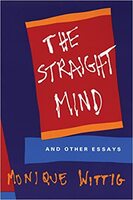
These political, philosophical, and literary essays mark the first collection of theoretical writing from the acclaimed novelist and French feminist writer Monique Wittig.
-
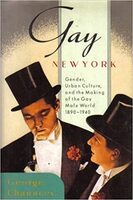
The award-winning, field-defining history of gay life in New York City in the early to mid-20th century Gay New York brilliantly shatters the myth that before the 1960s gay life existed only in the closet, where gay men were isolated, invisible, and self-hating. Drawing on a rich trove of diaries, legal records, and other unpublished documents, George Chauncey constructs a fascinating portrait of a vibrant, cohesive gay world that is not supposed to have existed. Called "monumental" (Washington Post), "unassailable" (Boston Globe), "brilliant" (Nation), and "a first-rate book of history" (New York Times), Gay New York forever changed how we think about the history of gay life in New York City, and beyond.
-
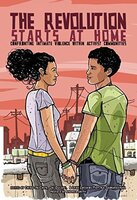
The Revolution Starts at Home is as urgently needed today as when it was first published. This watershed collection breaks the dangerous silence surrounding the "secret" of intimate violence within social justice circles. Just as importantly, it provides practical strategies for dealing with abuse and creating safety without relying on the coercive power of the state. It offers life-saving alternatives for survivors, while building a movement where no one is left behind. Praise for The Revolution Starts at Home "My joy and gratitude at the original publication of Revolution Starts at Home is now only exceeded by my excitement in the reprinting of this essential text. If we are to build visionary communities rooted not only in resistance but also in love, we need this book, and books like it, for survival. It is as simple as that." Walidah Imarisha, author of Angels with Dirty Faces: Three Stories of Crime, Prison, and Redemption "This book has brought me back from the brink of desperation many times. Its creative, real-world stories of interrupting intimate partner violence without using police or social services strengthens our community, builds our collective imagination, celebrates our resiliency, and pushes us to hone our practice. I keep a stockpile of this book on my shelf for gifting--it's required reading for justice seekers. --Shira Hassan, founder and principle consultant for Just Practice. "The editors of The Revolution Starts at Home have provided a landmark resource: an anthology by and for survivors of sexual assault lead by editors of color, all three of whom are revolutionary leaders seeking to deconstruct the structures that uphold violence in activist communities. For anyone who believes that the personal is deeply political in social justice circles, The Revolution Starts at Home is a must-read."- Allison McCarthy, Ms Magazine "The Revolution Starts at Home is a mirror to look into when doing the work of 'transforming ourselves to transform the world', as Grace Lee Boggs taught us. The voices in this collection speak from their own experiences, modeling vulnerability that, for me, was freeing as I turned to face the patterns of personal and organizational abuse in my life. This book is an offer towards wholeness, and can heal you if you let it." --adrienne maree brown, co-editor of Octavia's Brood: Science Fiction Stories from Social Justice Movements "The book isn't just about how social services and state intervention can leave already vulnerable communities more at risk when it comes to addressing interpersonal violence; the personal essays, real-world testaments, and tools provided...are about taking transformative justice to the next level and creating community and self-accountability." --Kjerstin Johnson, Bitch Magazine Ching-In Chen is the author of The Heart's Traffic. Jai Dulani is a writer and multimedia artist who has worked for racial and gender justice at the intersections of LGBTQ, youth, immigrant justice and anti-violence movements for over a decade in New York City. Leah Lakshmi Piepzna-Samarasinha is author of the Lambda Award-winning Love Cake, as well as Dirty River and Consensual Genocide.
-

Now published by Oxford University Press--at a new, lower price--The Social Construction of Difference and Inequality: Race, Class, Gender, and Sexuality, Seventh Edition, surveys how and why the categories of race, class, gender, and sexuality are constructed, maintained, experienced, and transformed. This popular anthology moves beyond simply discussing various forms of stratification and the impact on members of marginalized groups by providing a thorough discussion of how such systems of stratification are formed, perpetuated, and interconnected. Each reading ends with critical-thinking questions to help students relate content to their own lives and understand how their attitudes, actions, and perspectives may serve to perpetuate a stratified system.
-
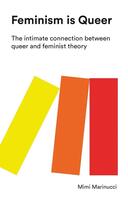
In Feminism is Queer, Mimi Marinucci provides a valuable introduction to the intimately related disciplines of gender and queer theory, and develops the innovative concept of queer feminism, which treats queer theory as being continuous with feminist theory. While there were significant conceptual tensions between second-wave feminism and traditional lesbian and gay studies, queer feminism offers a paradigm for understanding gender, sex and sexuality that overcomes this conflict in order to foster solidarity between those campaigning for women’s rights and those for LGBTQ rights.This updated and expanded edition engages with the latest developments in feminism and queer theory, including the new forms of both feminism and 'antifeminism' which have developed within online communities, the growing prominence of trans experiences in popular media, and the relevancy of queer feminism to a new generation of feminist activists. Feminism is Queer remains the indispensable guide for anyone with an interest in gender, sexuality, and the connections between feminism and queer issues.
-
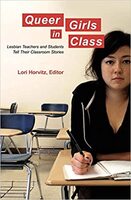
Queer Girls in Class is a compilation of personal essays by lesbian teachers and students who speak about sexual identity and its influence on the teaching and learning process. The mission of this anthology is to provide, through personal stories, an analysis of how sexuality-specifically, how identifying as a queer woman-can affect classroom dynamics in high school and university settings. Despite a perceived cultural acceptance of the GLBTQ community in the media, many gays and lesbians still suffer from their own internalized homophobia, as well as the homophobia of the outside world. These twenty-six essays give readers the opportunity to recognize, connect with, and critically think about the personal and political challenges and triumphs that queer women, whether out of the closet or not, have experience in the classroom and beyond.Lori Horvit'z short stories, poetry, and creative nonfiction have appeared in a variety of literary journals and anthologies. Horvitz, the recipient of an M.F.A. in creative writing from Brooklyn College, and a Ph.D. in English from SUNY Albany, she has been awarded writing fellowships from Yaddo, Ragdale, Virginia Center for the Creative Arts, Blue Mountain Center, Cottages at Hedgebrook, and Fundaci=n Valparaiso. She is Associate Professor of Literature and Language at UNC-Asheville, where she teaches courses in creative writing, literature, and women's studies.
-

In Freedom with Violence, Chandan Reddy develops a new paradigm for understanding race, sexuality, and national citizenship. He examines a crucial contradiction at the heart of modernity: the nation-state’s claim to provide freedom from violence depends on its systematic deployment of violence against peoples perceived as nonnormative and irrational. Reddy argues that the modern liberal state is organized as a “counterviolence” to race even as, and precisely because, race persists as the condition of possibility for the modern subject. Rejecting liberal notions of modernity as freedom from violence or revolutionary ideas of freedom through violence, Reddy contends that liberal modernity is a structure for authorizing state violence. Contemporary neoliberal societies link freedom to the notion of legitimate (state) violence and produce narratives of liberty that tie rights and citizenship to institutionalized violence. To counter these formulations, Reddy proposes an alternative politics of knowledge grounded in queer of color critique and critical ethnic studies. He uses issues that include asylum law and the military’s “don’t ask, don’t tell” policy to illustrate this major rethinking of the terms of liberal modernity.
-

Written by a social worker, popular educator, and member of the transgender community, this well-rounded resource combines an accessible portrait of transgenderism with a rich history of transgender life and its unique experiences of discrimination. Chapters introduce transgenderism and its psychological, physical, and social processes. They describe the coming out process and its effect on family and friends, the relationship between sexual orientation, and gender and the differences between transsexualism and lesser-known types of transgenderism. The volume covers the characteristics of Gender Identity Disorder/Gender Dysphoria and the development of the transgender movement. Each chapter explains how transgender individuals handle their gender identity, how others view it within the context of non-transgender society, and how the transitioning of genders is made possible. Featuring men who become women, women who become men, and those who live in between and beyond traditional classifications, this book is written for students, professionals, friends, and family members.
-

Written over a span of more than two decades, the essays by Iris Marion Young collected in this volume describe diverse aspects of women's lived body experience in modern Western societies. Drawing on the ideas of several twentieth century continental philosophers--including Simone de Beauvoir, Martin Heidegger, Luce Irigaray, Julia Kristeva, and Maurice Merleau-Ponty--Young constructs rigorous analytic categories for interpreting embodied subjectivity. The essays combine theoretical description of experience with normative evaluation of the unjust constraints on their freedom and opportunity that continue to burden many women.The lead essay rethinks the purpose of the category of "gender" for feminist theory, after important debates have questioned its usefulness. Other essays include reflection on the meaning of being at home and the need for privacy in old age residences as well as essays that analyze aspects of the experience of women and girls that have received little attention even in feminist theory--such as the sexuality of breasts, or menstruation as punctuation in a woman's life story. Young describes the phenomenology of moving in a pregnant body and the tactile pleasures of clothing.While academically rigorous, the essays are also written with engaging style, incorporating vivid imagery and autobiographical narrative. On Female Body Experience raises issues and takes positions that speak to scholars and students in philosophy, sociology, geography, medicine, nursing, and education.
-
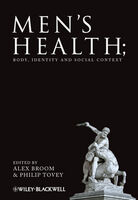
This book explores the social, political and theoretical underpinnings of the men's health field. Written by experts in the field, it provides a comprehensive understanding of the relationships between cultural understandings and health-related issues. It looks at important issues such as prostate cancer, chest pain and heart disease and how men experience such problems. It examines sexuality, mental illness and ethnicity as well as the role that sport can play in men's health outcomes.
-
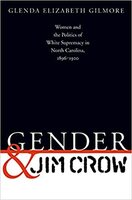
Glenda Gilmore recovers the rich nuances of southern political history by placing black women at its center. She explores the pivotal and interconnected roles played by gender and race in North Carolina politics from the period immediately preceding the disfranchisement of black men in 1900 to the time black and white women gained the vote in 1920. Gender and Jim Crow argues that the ideology of white supremacy embodied in the Jim Crow laws of the turn of the century profoundly reordered society and that within this environment, black women crafted an enduring tradition of political activism. According to Gilmore, a generation of educated African American women emerged in the 1890s to become, in effect, diplomats to the white community after the disfranchisement of their husbands, brothers, and fathers. Using the lives of African American women to tell the larger story, Gilmore chronicles black women's political strategies, their feminism, and their efforts to forge political ties with white women. Her analysis highlights the active role played by women of both races in the political process and in the emergence of southern progressivism. In addition, Gilmore illuminates the manipulation of concepts of gender by white supremacists and shows how this rhetoric changed once women, black and white, gained the vote.
-

Lesbian, gay, bisexual, and transgendered people are becoming more and more visible in all aspects of American culture, from party politics to MTV videos. Despite the recent queer publishing explosion, few texts cover a broad range of topics around sexual and gender identities. Most existing works are high-level theory books, texts focused upon specific disciplines or topics, or practical guides aimed primarily at a heterosexual audience or people just beginning to come out. There has been to date no general, accessible, and inclusive work suitable for use as an introduction to Queer Studies. In this collection, contributors assess the conflict between postmodernism and identity, the concept which typically serves as a linchpin for social and political organizing. Others address queer theory, looking specifically at how we define it, how it informs political activism, and how we can theorize such aspects of sexual performance/behaviors as s/m or butch-femme relationships. The volume contains contributions from both established and newly emerging Queer Studies scholars, including Amber Ault, M. V. Lee Badgett, Warren J. Blumenfeld, Gregory Conerly, Patricia L. Duncan, Ruth Goldman, Lynda Goldstein, Sherrie A. Inness, Christopher James, Amanda Udis-Kessler, JeeYeun Lee, Michele E. Lloyd, Tracy D. Morgan, Ki Namaste, Vernon Rosario II, Paula Rust, and Siobhan Somerville.
-

In 1990 Ellen Greenblatt published a study of gay- and lesbian-related terms in the Library of Congress Subject Headings. No such study has been published since, nor has such a study been conducted on the Library of Congress Classification system. This article returns to Greenblatt's LCSH study to see what progress has been made in the last two decades, then uses her study as a template to examine gay- and lesbian-related terminology in LCC. Greenblatt's objections to then-current headings are examples of a tension defined in the research of Eve Kosofsky Sedgwick and later Grant Campbell: between a "universalizing view," which values unmarked representation of all parts of the population as a whole, and a "minoritizing view" like Greenblatt's, which values visibility for the minority "at any cost." Catalogers and classificationists should be aware of this tension and respectful of current preferred usage of the minority group being represented.
-
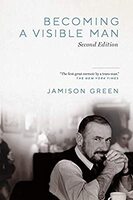
Best Book in Transgender Studies, 2005 Winner, Center for Lesbian & Gay Studies (CLAGS), NY 2005 Lambda Literary Award Finalist Written by a leading activist in the transgender movement, Becoming a Visible Man is an artful and compelling inquiry into the politics of gender. Jamison Green combines candid autobiography with informed analysis to offer unique insight into the multiple challenges of the female-to-male transsexual experience, ranging from encounters with prejudice and strained relationships with family to the development of an FTM community and the realities of surgical sex reassignment. For more than a decade, Green has provided educational programs on gender-variance issues for corporations, law-enforcement agencies, social-science conferences and classes, continuing legal education, religious education, and medical venues. His comprehensive knowledge of the processes and problems encountered by transgendered and transsexual people--as well as his legal advocacy work to help ensure that gender-variant people have access to the same rights and opportunities as others--enable him to explain the issues as no transsexual author has previously done. Brimming with frank and often poignant recollections of Green's own experiences--including his childhood struggles with identity and his years as a lesbian parent prior to his sex-reassignment surgery--the book examines transsexualism as a human condition, and sex reassignment as one of the choices that some people feel compelled to make in order to manage their gender variance. Relating the FTM psyche and experience to the social and political forces at work in American society, Becoming a Visible Man also speaks consciously of universal principles that concern us all, particularly the need to live one's life honestly, openly, and passionately.
-

While the words "we are everywhere" can be frequently heard at gay and lesbian political events, The Gay and Lesbian Atlas provides the first empirical confirmation of this rallying cry. Drawing on the most recent data from the U.S. Census, this groundbreaking work offers a detailed geographic and demographic portrait of gay and lesbian families in all 50 states plus the top 25 U.S. metropolitan areas. These results, presented in more than 250 full-color maps and charts, will both confirm and challenge anecdotal information about the spatial distribution and demographic characteristics of this community. It is probably no surprise that San Francisco, Key West, and western Massachusetts all host large gay and lesbian populations, but it might surprise some that Houston, Texas, contains one of the ten "gayest" neighborhoods in the country, or that Alaska and New Mexico have high concentrations of gay and lesbian couples in their senior populations. The Atlas is a unique and important resource for the political and public policy communities, public health officials, social scientists, and anyone interested in gay and lesbian issues
-
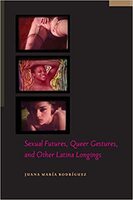
Winner of the Alan Bray Memorial Book Prize presented by the GL/Q Caucus of the Modern Language AssociationFinalist for the 2015 LGBT Studies Award presented by the Lambda Literary FoundationSexual Futures, Queer Gestures and Other Latina Longings proposes a theory of sexual politics that works in the interstices between radical queer desires and the urgency of transforming public policy, between utopian longings and everyday failures. Considering the ways in which bodily movement is assigned cultural meaning, Juana María Rodríguez takes the stereotypes of the hyperbolically gestural queer Latina femme body as a starting point from which to discuss how gestures and forms of embodiment inform sexual pleasures and practices in the social realm.Centered on the sexuality of racialized queer female subjects, the book’s varied archive—which includes burlesque border crossings, daddy play, pornography, sodomy laws, and sovereignty claims—seeks to bring to the fore alternative sexual practices and machinations that exist outside the sightlines of mainstream cosmopolitan gay male culture. Situating articulations of sexual subjectivity between the interpretive poles of law and performance, Rodríguez argues that forms of agency continually mediate among these various structures of legibility—the rigid confines of the law and the imaginative possibilities of the performative. She reads the strategies of Puerto Rican activists working toward self-determination alongside sexual performances on stage, in commercial pornography, in multi-media installations, on the dance floor, and in the bedroom. Rodríguez examines not only how projections of racialized sex erupt onto various discursive mediums but also how the confluence of racial and gendered anxieties seeps into the gestures and utterances of sexual acts, kinship structures, and activist practices.Ultimately, Sexual Futures, Queer Gestures, and Other Latina Longings reveals —in lyrical style and explicit detail—how sex has been deployed in contemporary queer communities in order to radically reconceptualize sexual politics.








































